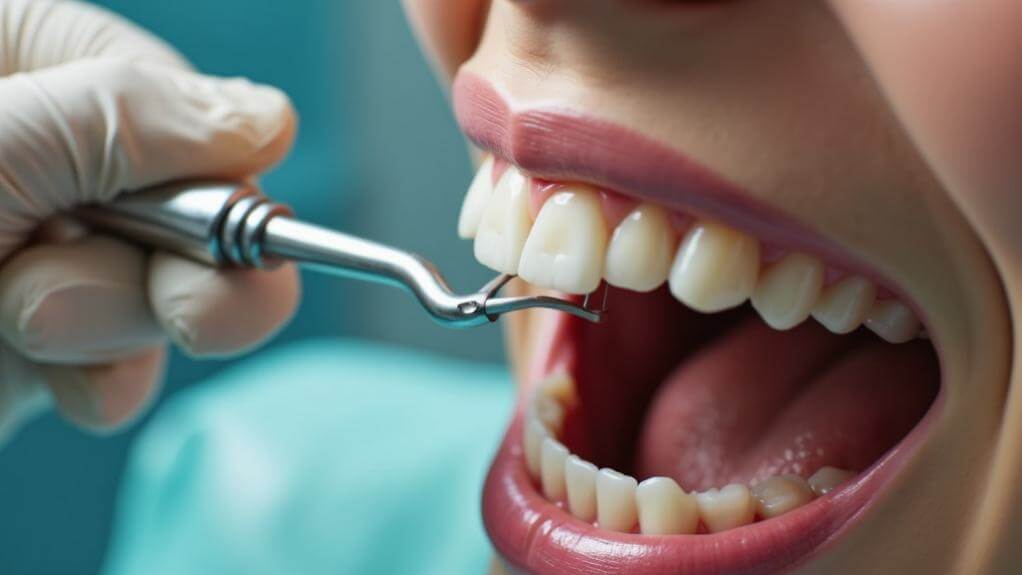Tooth Extractions: A Key Step to Braces
Tooth extractions play a crucial role in orthodontic treatment as they address dental crowding and bite issues, enabling optimal tooth alignment. Crowded teeth complicate hygiene and increase decay risk. By strategically removing select teeth, space is created, and the remaining teeth shift to their ideal position, improving overall dental function and aesthetics. This targeted procedure addresses both cosmetic and health concerns. A well-tailored extraction plan precedes successful orthodontic outcomes. Understanding the complex needs and benefits of each extraction sets the foundation for further insight into personalized approaches to correcting dental imperfections, fostering a pathway towards enhanced treatment results.
Why Tooth Extractions Are Necessary
In many cases, tooth extractions are a necessary component of orthodontic treatment, addressing issues such as dental crowding, insufficient jaw space, and irregular bite patterns.
When teeth are crowded or overlapping, it can be challenging to maintain proper dental hygiene, leading to increased risk of tooth decay and gum disease.
Tooth extractions create the necessary space for alignment during treatment, allowing remaining teeth to shift into proper positions. This, in turn, promotes ideal oral health and functionality.
While the thought of tooth extractions may cause patient anxiety, understanding the process and its benefits can help alleviate concerns.
Correcting Bite Issues With Extractions
Correcting bite issues is a critical component of orthodontic treatment, and tooth extractions can play a pivotal role in achieving ideal results. Strategic tooth removal facilitates better bite correction by allowing for improved alignment of the remaining teeth. This, in turn, enhances overall dental function and promotes long-term oral health.
| Bite Issue | Extraction Strategy | Treatment Outcome |
|---|---|---|
| Overbite | Upper premolar extraction | Improved vertical alignment |
| Underbite | Lower premolar extraction | Enhanced horizontal alignment |
| Crossbite | Strategic extraction of multiple teeth | Harmonious bite alignment |
| Protruding teeth | Upper incisor extraction | Aesthetic and functional improvement |
| Crowding | Extraction of multiple teeth | Space creation for alignment |
Creating Space for Alignment
Tooth extractions are often a necessary step in creating the space required for ideal tooth alignment. Insufficient tooth spacing can lead to overlapping or misalignment of teeth, compromising oral health and functionality.
By removing strategically selected teeth, orthodontists can create the necessary space for the remaining teeth to shift into proper positions. This, in turn, enables optimal alignment, promoting improved oral health and functionality.
The benefits of proper alignment extend beyond aesthetics, as it also enhances the overall dental function. By creating space for alignment, orthodontists can effectively address crowding and space issues, ultimately achieving stable and harmonious results post-treatment.
Proper tooth spacing is essential for realizing the full alignment benefits of orthodontic treatment.
Personalized Extraction Treatment Plans
With individualized dental anatomy in mind, orthodontists develop personalized extraction treatment plans tailored to each patient’s unique needs and treatment goals.
A thorough patient assessment is conducted to identify specific alignment issues, such as crowding, bite irregularities, or protruding teeth. This assessment informs the development of a customized treatment plan that addresses both cosmetic and health concerns.
Treatment goals, including proper tooth alignment and ideal oral function, are prioritized to achieve long-term stability. By considering the patient’s distinct dental anatomy and treatment objectives, orthodontists create a tailored extraction plan that guarantees the most effective and efficient treatment outcome.
This personalized approach enables patients to receive targeted care that addresses their specific needs, resulting in a more successful and satisfying orthodontic experience.
The Extraction Procedure Explained
Precision is a hallmark of the tooth extraction procedure, which is typically performed by oral surgeons or general dentists with specialized training in exodontia.
To alleviate patient anxiety, it is crucial to understand the steps involved in the process.
The extraction procedure can be broken down into key stages:
- Administration of local anesthesia: Guarantees patient comfort during the procedure.
- Sectioning and elevation of the tooth: Careful manipulation to loosen the tooth from surrounding bone and tissue.
- Removal and closure: Tooth extraction, followed by closure of the extraction site to promote healing.
Post-extraction care instructions are provided to facilitate smooth recovery and minimize complications.
In Summary
Tooth extractions are an essential component of orthodontic treatment, addressing issues such as overcrowding, bite irregularities, and protruding teeth. Strategic tooth removal facilitates ideal dental alignment, improves oral health, and enhances aesthetic and functional outcomes. Extraction treatment plans are tailored to each patient’s unique needs, considering dental anatomy, alignment issues, and treatment goals. Precision and expertise are important in executing extractions, typically performed under local anesthesia. Extractions are a key step towards achieving a harmonious smile and ideal oral health.
